|
| |
Back to homebuilts
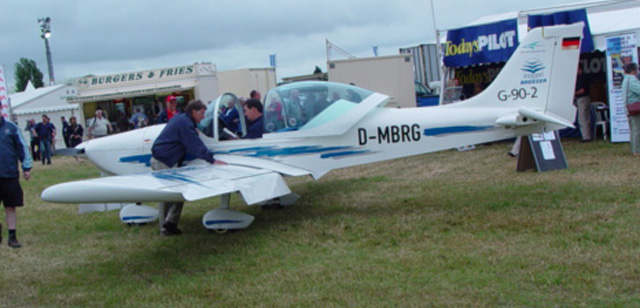 |
The Ikarus Breezer is another modern kit
aircraft, in this case hailing from Germany (www.aerostyle-gmbh.de)
and largely aluminium rather than composite, to suit different skill
levels of different builders. It can be powered by a range of
engines between 70 and 100hp, most popular being the ubiquitous
Rotax 912, which gives it a cruising speed of 125mph. Seating two,
its gross weight is 1,040lb. It is 20 feet 10 inches long with a
wing span of 28 feet 4 inches.
Kemble, July 2005 |
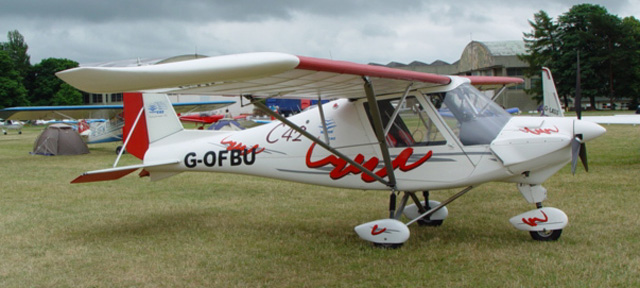 |
The Ikarus C42 is a little two seat
microlight of aluminium tube and canvas construction, and powered by
an 80hp Rotax 912 (or 100hp 912S), which gives it a top speed of
120mph and range of 400 miles. Several hundred of these simple
machines have been built since they were first introduced in 1996.
Gross weight is 990lb, which allows it to fit into the microlight
category pretty well everywhere such a thing exists. It is 20 feet 5
inches long with a wing span of 31 feet. Kemble,
July 2005 |
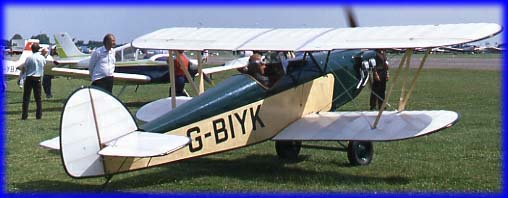
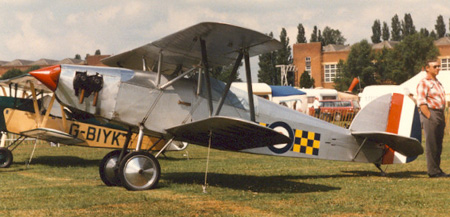 |
The Isaacs Fury was designed by Mr J.O.
Isaacs, using construction methods he had learned at Southampton
building his Currie Wot. It is a 7/10 scale replica of the 1930s
Hawker Fury single seat fighter. Initially powered by a 65hp Walter
Micron engine, and first flown as such in 1963, it was later fitted
with a more suitable 125hp Lycoming. Wing span is 21 feet, length 19
feet 3 inches and gross weight 1,000lb. Plans were later made
available to other homebuilders.
15 are currently registered in Britain,
including this one, powered by a Continental C90 engine and pictured
at Cranfield in July 1984. The lower picture shows another Fury in
more `traditional' colours. |
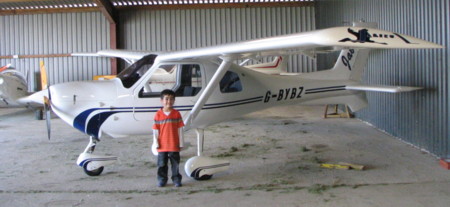 |
The Jabiru (www.jabiru.co.uk)
is a two seat light trainer designed in Australia, which can be
either homebuilt or (less commonly) factory built. It is powered by
an 80hp Jabiru 2200 engine, which was developed for the Jabiru
aircraft but is now a popular choice for many other homebuilt types.
With empty weight of 650lb and gross weight of 1,190, it has a
pretty impressive useful load. It will cruise at 115mph for over
1,100 miles. This one was at Top Farm in
June 2007. |
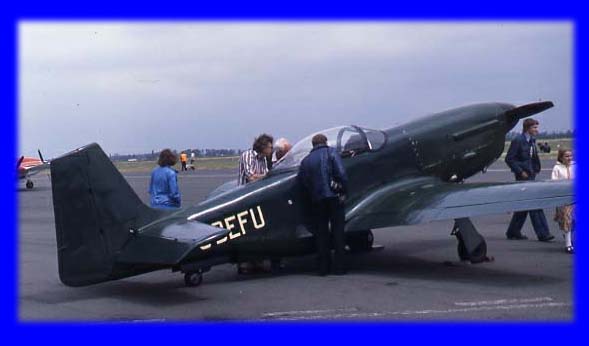 |
The Jurca Gnatsum is a 2/3
scale replica of the American P-51 designed by French amateur
constructor Marcel Jurca, powered (in this example) by a Ranger inline engine.
The designer's impish choice of name is, of course, `Mustang' spelt
backwards. Top speed is over 200mph, not bad for a home-built
machine! I am surprised it is not more popular; it is of
course somewhat complex, and a single seater, but it looks
tremendous fun. I have no record of
where this picture was taken but it looks suspiciously like
Cranfield in the mid 1980s.
|
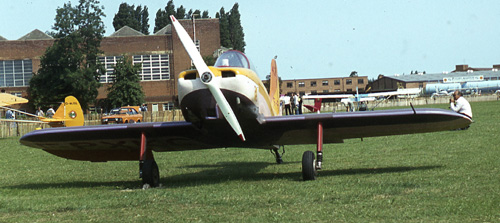 |
This front view of a Jurca Tempete shows the
extraordinary aspect ratio of the wings, which are evidently
designed for speed rather than endurance! The prototype of this wood
and fabric single seater first flew in France as long ago as June
1956. it can be powered by a wide range of engines, from 65 to a
thumping 180 horsepower. Even the 65hp version cruises at over
100mph, and anything above 90hp makes it practical for aerobatics.
Gross weight of 950lb would technically allow it to be classified as
a microlight. It is 19 feet 2 inches long, with a wing span of only
19 feet 8 inches.
This one was at
Cranfield, July 1983 |
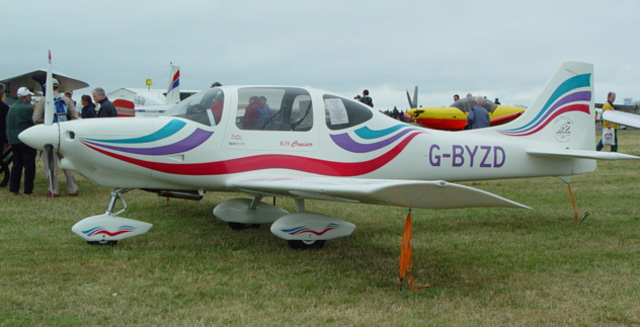 |
The KIS Cruiser was derived from the original
KIS design, which stands for `Keep It Simple', always an excellent
maxim. Marketing of this mainly composite machine is now undertaken
by the Pulsar organisation (www.pulsaraircraft.com).
It is unusual in being a four seat homebuilt; construction is mainly
composite. It can use various engines from 160 to 210hp. In general,
it cruises at 190mph and has a range of 900 miles. Gross weight is
2,400lb; it is 23 feet long with a wing span of 29 feet.
This one was at
Kemble, July 2005. |
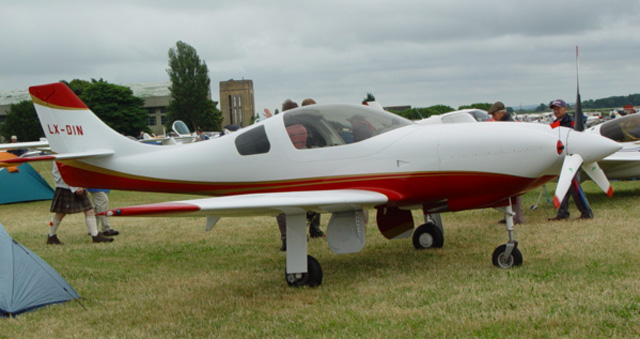 |
The Lancair is a racy two seat composite kit
aircraft with (optionally) retractable undercarriage, designed by
Lance Neibauer (www.lancair.com).
Its whopping 310hp Continental IO-550 engine (enormous for a
homebuilt) gives it a staggering 280mph cruising speed, and a range
of 1,200 miles - far better than most factory-built machines. The
prototype of this two seater flew in 1985. It is 22 feet long, with
a wing span of 25 feet 5 inches, and gross weight of 2,200lb.
This one visited Kemble from Luxembourg in
July 2005. |
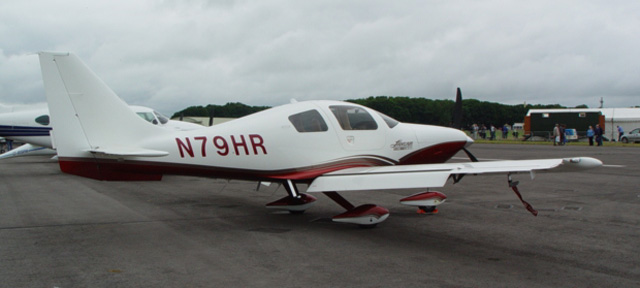 |
Although the Lancair Columbia was developed
as a four seat version of the Lancair range, it is now marketed as a
factory built machine by a quite separate organisation (www.flycolumbia.com).
The same engine is retained, and great attention is paid to safety
aspects such as seat design. It has fixed undercarriage and is
heavier (3,400lb gross weight) so cruising speed is `only' 205mph
with the same engine as the two seat Lancair, but the bigger wing
carries more fuel so range is up to 1,500 miles. This is certainly a
very serious touring machine.
This one was at
Kemble, July 2005 |
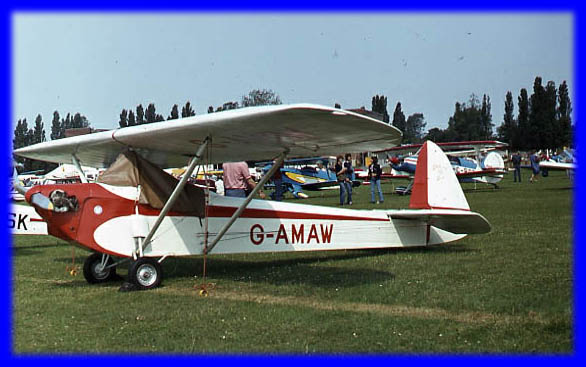 |
The original Luton LA4 Minor was designed in
the mid 1930s by Mr C.H. Latimer-Needham. Plans were made available
to homebuilders from 1937, making it one of the very first of the
home-built aircraft. It is a very simple, light, single seat wood
and fabric aircraft, making it a popular choice for builders looking
for ease of construction and maintenance. Wing span is 25 feet,
length 20 feet and maximum weight 750lb. Top speed is 85mph and
range 180 miles. It can be fitted with a wide variety of possible
engines. Its popularity tailed off in the 1980s as more modern
designs with greater range became available. Still, there are 29
registered in the UK as of October 2005.
This one was built by Flight Lieutentant J.R
Coates (later designer of the Swalesong) at Bassingbourn in 1948,
and is still airworthy in 2005. It was pictured at Cranfield in July
1983. |
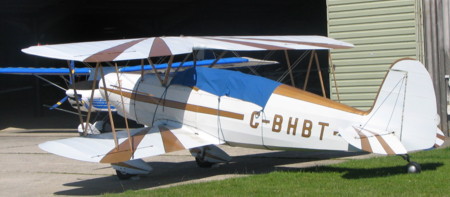 |
Marquardt
Goodwood, August 2007 |
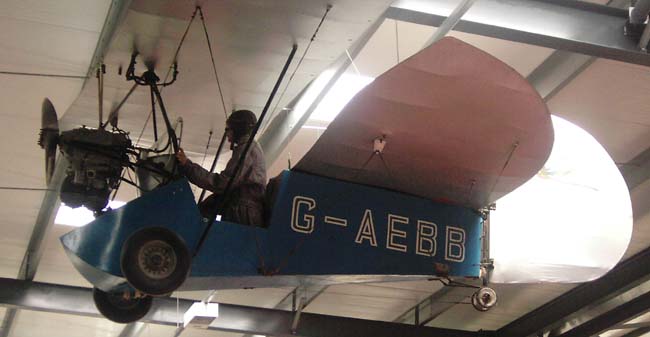 |
The Mignet Pou-du-Ciel (Flying Flea) was the
aircraft which first started the home-building movement. It is a
small single seater of very simple, wood and fabric construction,
having an extremely unusual tandem-wing design. There are no
ailerons; turns are made purely with rudder. Pitch control is
achieved by pivoting the upper wing to alter its angle of attack.
Monsieur Mignet first flew his prototype in France in 1933. The
concept of a Permit to Fly, with construction standards monitored by
authorised inspectors under the aegis of the Ultralight Aircraft
Association, later to become the Popular Flying Association, was
invented to deal with the question of how to provide airworthiness
certificates to Fleas. Unfortunately the design had a serious flaw:
in a substantial nose-down attitude, the position of the upper wing
relative to the centre of gravity gave insifficient pitching moment
to raise the nose, making a fatal dive into the ground inevitable.
The Flea was banned in September 1936, after 83 had been built in
the UK in a remarkably short time.
This one is preserved in the museum at Old
Warden. Photograph by Ivy in April 2005. |
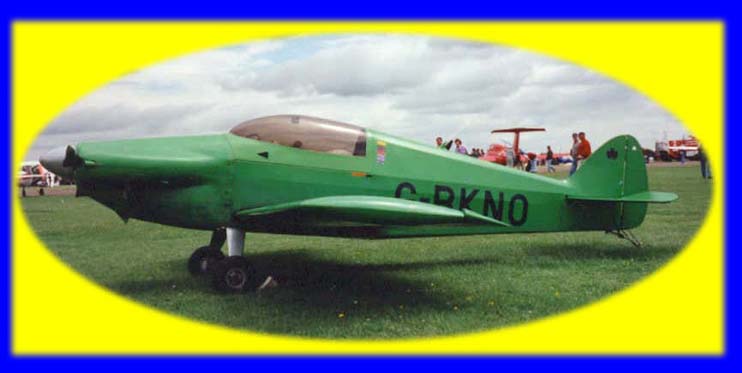 |
The Monnett Sonerai II is theoretically a two
seater, but its 65hp Volkswagen engine often limits it to one in
practice. John Monnett originally designed the Sonerai in the USA in
1971 as a racer, and the Sonerai II retains the short (18 foot 8
inch span) wing. It is 18 feet 10 inches long, which makes it one of
the few light aeroplanes to be longer than wide. However, on 65hp,
it manages to achieve a 150mph cruising speed! Gross weight is
950lb. Plans are available from
www.greatplainsas.com/sonerai.
This one was at Cranfield, July 1988 |
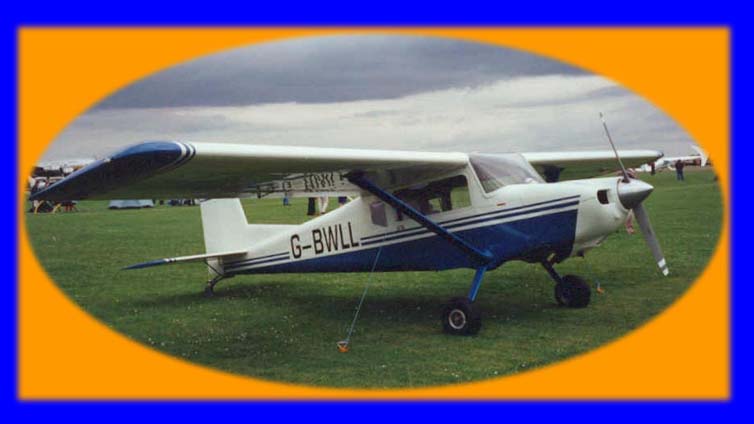 |
The Murphy Rebel is theoretically a two
seater, but it can be modified to accept a third seat at the back,
making it a most unusual homebuilt configuration. It looks like the
sort of rugged machine which could even survive the harsh conditions
of Canadian bush flying, which is not surprising since that is
exactly what its designers (www.murphyair.com),
based in Chilliwack, British Columbia, had in mind. It is an
aluminium kit, powered by a choice of either Rotax or Lycoming
engines between 80 and 160hp. it can cruise at up to 120mph and has
a range of up to 880 miles. It is increasingly popular.
This one was at
Cranfield, July 1988 |
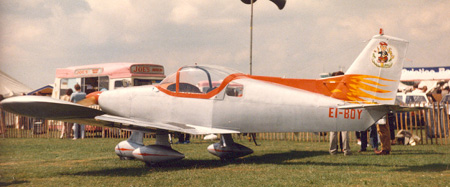 |
The Murphy Sprite is nothing to do with the
company responsible for the Rebel, but is in fact a private
modification of the Practavia Sprite by Irishman Mr A. Murphy. Its
140hp Continental engine made it a `2+2' seater, meaning that you
have to be very small to get in the back.
It visited
Cranfield in July 1988. |





|